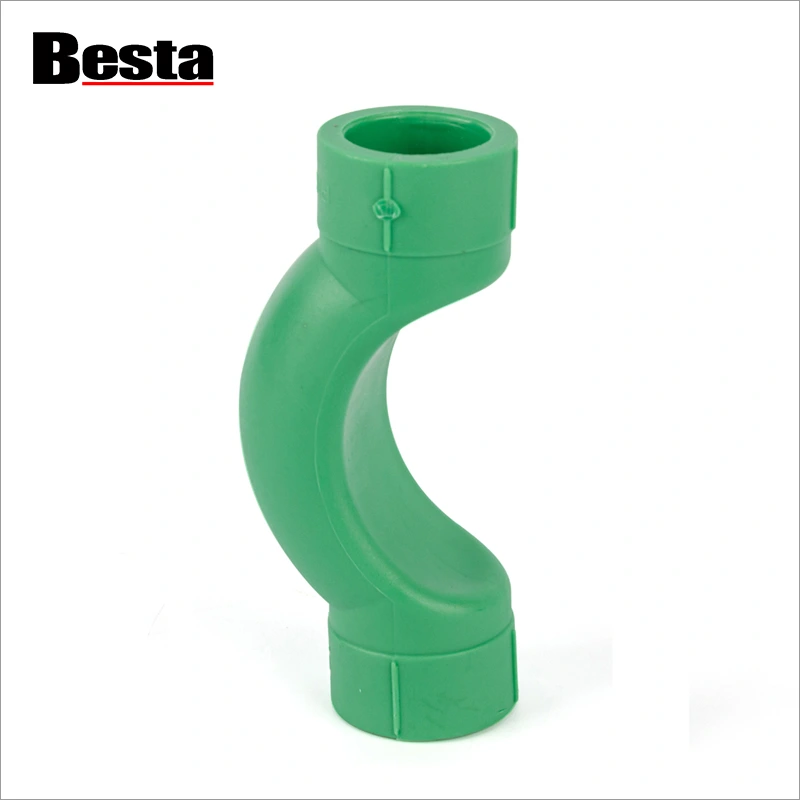Understanding the PPR Plastic Fitting Short Bend: A Reliable Solution for Plumbing and Piping Systems
2025-01-09
In modern plumbing and piping systems, the materials used for fittings and joints play a crucial role in the overall performance and longevity of the infrastructure. One such material that has gained significant popularity due to its durability, ease of installation, and cost-effectiveness is PPR (Polypropylene Random Copolymer) plastic. Among the various PPR fittings, the PPR Plastic Fitting Short Bend stands out as an essential component for directing the flow of fluids in plumbing systems. In this blog, we will explore the features, benefits, and applications of the PPR Plastic Fitting Short Bend, and why it’s an excellent choice for both residential and commercial piping installations.
What is a PPR Plastic Fitting Short Bend?
A PPR Plastic Fitting Short Bend is a type of connector used in plumbing systems to change the direction of a pipe, usually by 90 degrees. As the name suggests, the "short" in the fitting indicates that the bend is designed to be more compact, taking up less space than longer, traditional elbows. The PPR material used in these fittings offers a balance between strength, flexibility, and chemical resistance, making them ideal for a variety of applications.
The primary function of a PPR short bend fitting is to connect two pipes that need to be aligned in different directions while maintaining a secure, leak-proof connection. These fittings are commonly used in both residential and commercial plumbing installations, particularly for water supply lines, heating systems, and other fluid transportation systems.
Benefits of Using PPR Plastic Fitting Short Bend
1. Cost-Effectiveness:
PPR fittings, including the short bend, are relatively inexpensive compared to metal fittings like brass or copper. Their low initial cost, combined with the long lifespan and minimal maintenance requirements, makes them an affordable choice for both residential and commercial plumbing systems.
2. Easy Installation:
The installation process for PPR fittings is straightforward. As mentioned, these fittings are welded together using heat fusion or butt welding techniques, which require no additional seals or gaskets. This reduces installation time and labor costs, making PPR systems a highly efficient option.
3. Reduced Maintenance Needs:
Because of their resistance to corrosion, scaling, and chemical degradation, PPR fittings require far less maintenance than their metal counterparts. There is no need for periodic treatment against rust or scaling, which can significantly lower the long-term maintenance costs.
4. Energy Efficiency:
PPR pipes and fittings, including the short bend, are excellent insulators. This means that the system can retain heat better in hot water applications, reducing the energy consumption needed to maintain the desired temperature. This energy efficiency makes PPR systems a green choice for sustainable plumbing.
5. Environmentally Friendly:
PPR is a recyclable material, which makes it an eco-friendly option for piping systems. The production and disposal of PPR fittings have a lower environmental impact compared to some other materials, contributing to sustainable building practices.
Applications of PPR Plastic Fitting Short Bend
1. Residential Water Supply Systems:
In homes, the PPR short bend fitting is commonly used to direct the flow of both hot and cold water through plumbing systems. These fittings are ideal for routing pipes around corners or tight spaces, ensuring an efficient water distribution network.
2. Heating Systems:
PPR fittings are particularly well-suited for hot water heating systems, including underfloor heating and radiator systems. The PPR short bend helps connect pipes in these systems, allowing for smooth water flow while withstanding high temperatures.
3. Commercial Plumbing Installations:
In commercial properties, such as hotels, office buildings, and industrial facilities, PPR short bend fittings are used to connect water supply lines, hot water systems, and even chilled water systems. The compact design and reliability make them ideal for large-scale installations.
4. Irrigation Systems:
PPR fittings, including the short bend, are frequently used in agricultural applications for irrigation systems. These systems require durable, leak-proof fittings to transport water efficiently across large areas, and PPR fits this need perfectly.
5. Chemical and Industrial Fluid Systems:
Due to their chemical resistance, PPR plastic fittings can also be used in industries where chemical fluids need to be transported safely and efficiently. PPR short bends are commonly found in industrial applications like chemical plants, water treatment facilities, and food processing systems.
The PPR Plastic Fitting Short Bend is a highly versatile, durable, and cost-effective solution for modern plumbing and piping systems. Its compact design, combined with excellent chemical resistance, high-pressure tolerance, and easy installation process, makes it a preferred choice for both residential and commercial applications. Whether you’re installing a new water supply system, upgrading a heating network, or designing an industrial fluid transport system, the PPR short bend offers the reliability and long-lasting performance you need. With its combination of strength, ease of use, and sustainability, the PPR Plastic Fitting Short Bend remains one of the best choices for today’s piping solutions.



